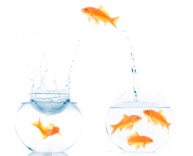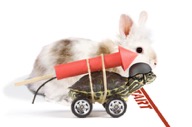The Performance-Innovation Dilemma

Part I
What Leaders MUST Understand about Performance vs. Innovation
So you want to lead your organization to instill high performance? Absolutely.
And you want to promote innovation and a culture of change to keep your organization ahead of the game? Of course.
Be careful you aren’t leaving your people scratching their heads confused - or worse, that you aren’t creating disincentives for both performance and innovation. Leading for performance is very different from leading for innovation. And leaders must often manage both simultaneously.
Performance is about achieving results, efficiently and effectively. Leading for high performance is centered on management excellence - organizing resources and processes to accomplish work, setting standards for performance and quality, then measuring execution against those standards. Think scorecards, six sigma, and LEAN.
Organizational characteristics that encourage high performance include:
- clear communication about expectations, both individual and group;
- clarity and standardization of roles and tasks;
- timely performance feedback and accountability.
Innovation is about achieving alternative results. Peter Drucker defines innovation as “a change that creates a new dimension of performance.” A new dimension is not simply an incremental change, but reflects expanded size, scope, or direction.
Organizational characteristics that encourage ongoing innovation include:
- focus on overall outcome of the group, rather than individual performance;
- Minimal formal structures and hierarchal roles;
- An emotional tone that is non-critical and engaging.
Change Forms the Creative Tension Between Performance and Innovation
Change is the enemy of performance. High performing organizations craft their business processes for efficiency and repeatability with as few errors as possible. Incremental change that improves efficiency in the established process might be welcome - however the more change reshapes the process the more performance is disrupted. Performance mavens wring their hands.
Change is inherent in innovation. The experimentation required to arrive at innovation is often inefficient and downright chaotic. Even very disciplined techniques for innovation - e.g., a system for rapid prototyping - seek to increase errors, because it produces information valuable for innovation. Peak performance doesn’t have a chance until an innovation is ready to be institutionalized.
In short, performance inhibits innovation, and innovation inhibits performance. Chances are very high that your organization needs both.
__________
The Performance-Innovation Dilemma
Part I: What Leaders Must Know About Performance vs. Innovation
Part II: 3 Leadership Errors to Avoid
Part III: 5 Ways to Navigate the Performance-Innovation Dilemma
***
by Tom Stevens (c)2013
Tom Stevens helps leaders create and sustain exceptional organizations. To contact him, visit www.ThinkLeadershipIdeas.com or call 919-245-1026
This article may be freely reprinted in your company, association, or publication (or website) under the following terms: that the author attribution, copyright notice, contact information, and this reprint notice be included; and that you inform us that you are using the article (samples appreciated).
Contact Tom for a pdf version of the article that includes all three parts.
THINK! Subscribers received this leadership article in PDF - FREE
You can too! Get this or similar articles immediately when you subscribe...get articles now
